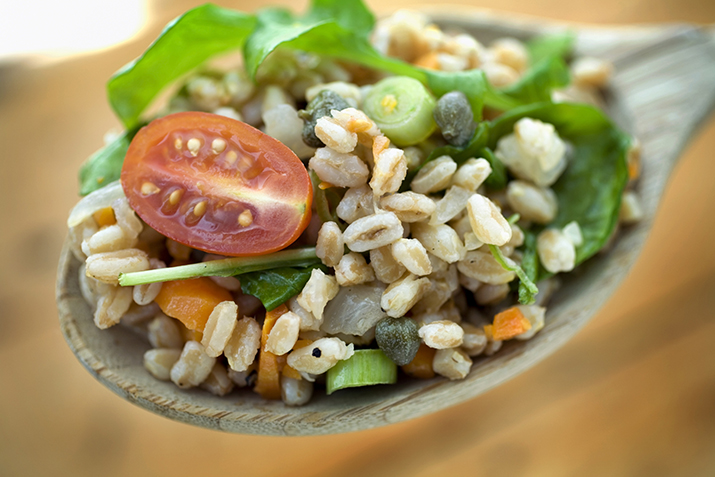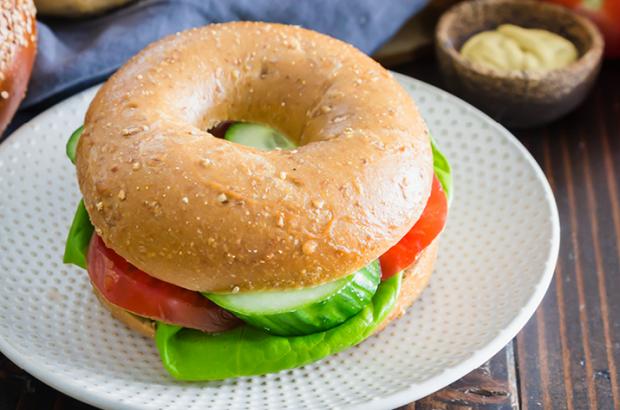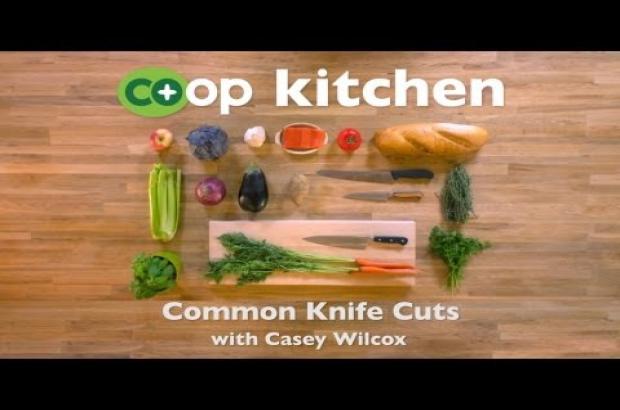Article
Whole Grains — More Than Just Side Dishes

Meat. Starch. Vegetable. That’s the layout of a typical American meal, with rice, potatoes and pasta showing up on their regularly scheduled spot on the plate. I like to mix things up a bit by incorporating a variety of grains, including whole grains, into side dishes and salads. Sometimes, I let the grain (and vegetable) take up a fair amount of real estate on the plate, and try to think of meat more as an accent—which is also in keeping with the USDA's dietary recommendations. But beyond the "good for you" aspect, whole grains are also great tasting and inexpensive.
Experimenting with the many grains available in the bulk food section, I might make a barley pilaf or quinoa salad, then top it with a few slices of freshly grilled chicken or steak and serve it with a leafy green salad. Or, I'll oven-roast polenta, top it with marinara sauce and gussy it up with Italian chicken sausages.
USDA Dietary Guidelines Include:
- At least half of all the grains eaten should be whole grains.
- Fruits, vegetables and grains should comprise more than 3/4 of your plate.
For more information, go to ChooseMyPlate.gov.
Salads
Some of my favorite choices for whole grain salads include bulgur, brown rice, quinoa, barley, wheat berries and farro (a type of wheat grain from Italy). Cook the grain according to directions on the package or the bulk bin, using salt in the cooking water. The grain should not be overcooked; when done the grain should still be chewy but not tough in the middle. Spread out the cooked grain on a rimmed baking sheet to cool to room temperature.
Grain salads are a natural match with homemade vinaigrette dressing. For 4 cups cooked grains, make a dressing of 3 tablespoons olive oil and 1 tablespoon wine vinegar. Add flavorings like mustard and chopped fresh herbs and salt and pepper. Transfer the cooled, cooked grains to a large serving bowl and pour the dressing over the grains. Add thinly-sliced green onions, cooked broccoli or asparagus, and sesame or sunflower seeds. Refrigerate until cold and top with crumbled goat or feta cheese, if you like.
Pilaf
To make a pilaf, cook the grains as you would for the salad, including cooling. For 4 cups grains, heat 2 tablespoons extra virgin olive oil in a large skillet, then add 1/3 cup chopped onion or shallots, 1 teaspoon finely-chopped garlic, and 1 teaspoon finely-chopped fresh herbs. Saute until the onion is tender, add the grain and stir to coat. Add 1/2 cup water or broth, then bring to a simmer and season with salt and pepper. Continue simmering until the flavors come together and the liquid is reduced, about 5 minutes.
Polenta
The easiest version of polenta I know uses a buttered 8 by 8-inch baking dish. Combine 1 cup polenta and 1 teaspoon salt in the dish, then add 3 1/2 cups warm water and dot with butter. Bake, uncovered, in a preheated 350-degree oven. After 45 minutes, stir the polenta to incorporate any unabsorbed water, and continue cooking until the grains are tender, 10 to 15 minutes. Serve with marinara sauce simmered with 2 or 3 sliced Italian chicken sausages.
Satisfying but never heavy, these whole grain dishes add an exciting variety of healthy starches to your dinner plate.













